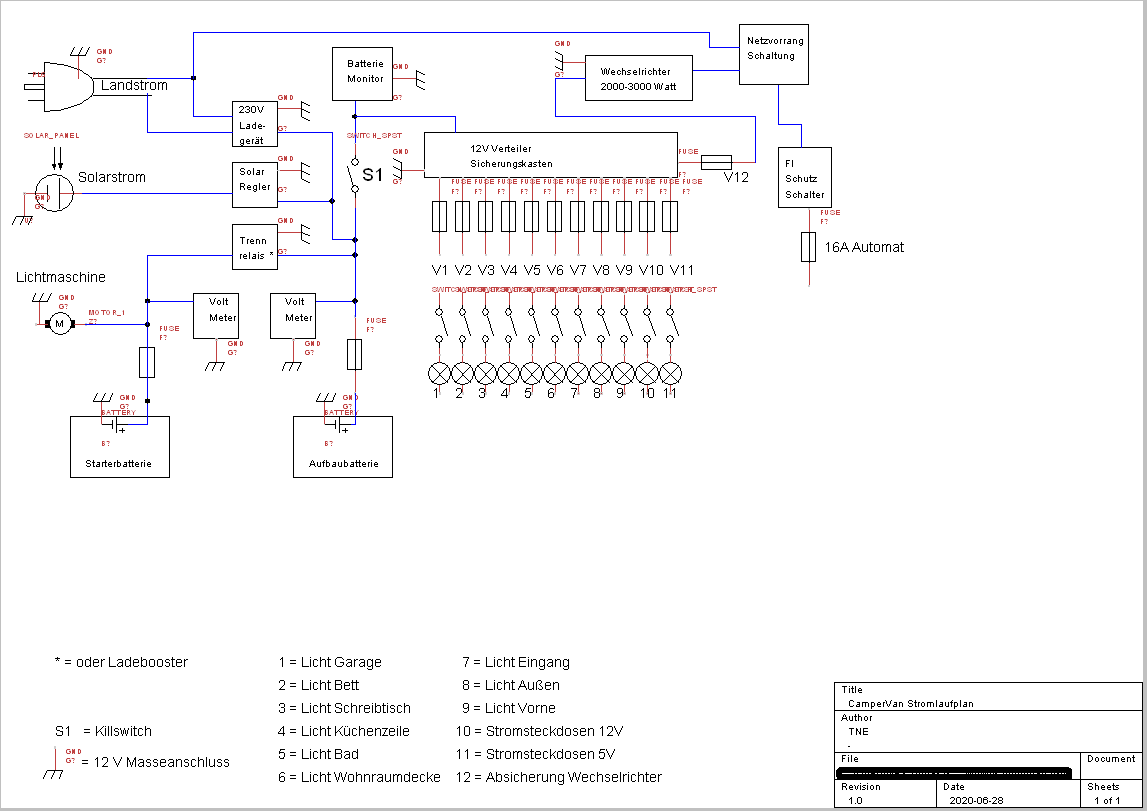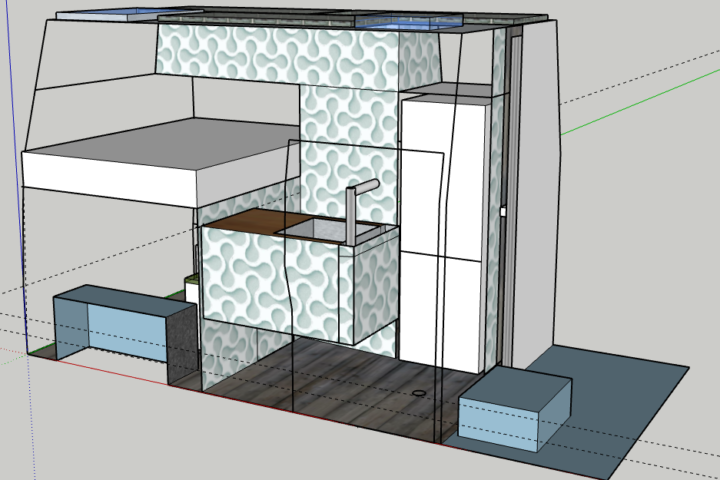The rough overview is that the van has of course the starter battery, which is charged by the alternator. Additionally I need one or more batteries to supply the living area with electricity. So far so good. Now you have to think less about how to use the electricity and more about how to get the electricity so that the battery(s) are not empty all the time.
- Option: Of course the alternator. This charges the starter battery and can of course also charge the body battery. In the simplest case this requires a cut-off relay and in the special case a charging booster. When is this special case? I will write a separate article on this topic at some point.
- Option: The charger on shore power. In my case of application this is only an emergency solution, because I plan to be self-sufficient and therefore I will have shore power available rather rarely.
- Option: Solar. Nowadays the dimensioning and the costs are rather standard but still very individual. In my case it will be the main source of supply and therefore I will dedicate one or more own contributions to this topic.
- Option: The Generator. It replaces the shore power connection and supplies a charger. Also this can only be an emergency solution, because whether I run the van motor or a generator is at most a difference in the resulting noise pollution for the surrounding area. So this is only possible if you are not only self-sufficient but also lonely.
The options mentioned are of course not exclusive and so you don’t have to choose one but can combine them. For this reason all 4 of them are planned. The generator does not appear in the plan, because it only supplies the shore power connection if necessary.
And now an important warning and an explanation!
Work on the electrical system is life-threatening and must be carried out by a specialist. You neither want your WoMo to burn down nor do you want to get an electric shock. So only do it yourself, if you know what you are doing! My plans are for me and can contain mistakes, so I don’t take any warranty or liability for them.
The following plan shows only the electric circuit. So the drawn lines are not necessarily single-core. The lamp symbol is only a symbol for a power consumer to make the plan easier to understand. Whether this is a lamp or a consumer connected to a socket is not important for the plan.
But again: Who does not understand the plan must get itself compellingly technical support, in order to avoid damage to humans and machine.
The idea:

What do you see there now?
There are 3 potential power sources (shore power, solar, alternator) These all need their own electronically controlled connection to the batteries.
-The cut-off relay or charge booster connects the starter battery to the body battery. (in both directions)
-The solar regulator converts the voltage to 12V and conducts/regulates the charging current to the battery.
-The 230V charger does what the name says when shore power is available.
-Then you can see a grid priority circuit in the plan. This relay only controls a “preferred” power source. In this plan this is the shore power (A). If this is present, the inverter is disconnected. But I will write a more detailed report about this as well, because this variant has advantages and disadvantages and might be adapted again.
The voltmeters only show the voltage of the respective batteries. This is purely informative and optional.
The battery monitor shows, depending on the version, everything concerning the battery. Voltage, capacity, charge current, discharge current, consumption, remaining range, etc. Although this is also an optional accessory, because it does not serve the function, I can only warmly recommend it, because this is the only way to get an overview of your energy balance. Of course, you could always measure everything manually and calculate the values yourself but economy is different.
Now the power sources and batteries are under control. So we can take care of the consumers.
For this purpose we need a 12V connection panel, which also houses the fuses and an inverter which converts the 12V DC voltage into 230V AC voltage. From the inverter on, we continue in principle according to the rules of home electrics with a few exceptions. You already suspect it? There is also a separate contribution to this.
How I have connected what is of course still detailed in the individual articles that show the actual conversion. The planning phase is still running. Of course, the material list is also part of the planning. In the range of the devices one can get everything from cheap to expensive or from simple to luxury. What it will be in the end is of course budget and wish dependent.
But a warning in advance! I will order large parts of this equipment directly in China, because there it is mostly produced anyway. BUT do this only if you know how the Chinese mail order companies tick. There “label fraud” is the order of the day. PWM chargers are often called MPPT chargers. Solar panels have 300 Watt and more. Small batteries have 10 thousand mAh capacity, etc…. In short, even Chinese manufacturers cannot overcome the laws of physics and do magic. I will also write my own article on this topic on occasion, because I have been ordering in China for almost 20 years and without any problems.
To make your purchase safer I will always give an alternative source with buyer protection, like Amazon.
So much for the installation of the electrical supply in my CamperVan. Details will follow in the implementation phase. How does the planning continue? The water supply is at least as important as the power supply…




